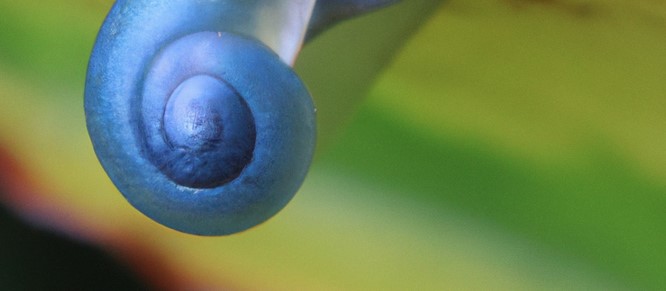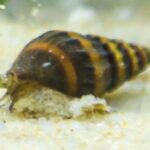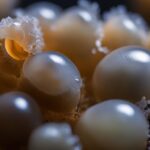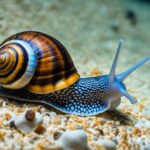Blue mystery snails (sometimes referred to as apple snails, scientifically called Pomacea diffusa) are a popular choice of pet due to their beautiful blue coloring and easy care requirements. Especially attractive is their dark body with orange freckles and a blue shell, making them one of the more exotic color variations of mysteries. However, it is important to note that the shell itself is actually white, not blue – its unique coloration comes from the dark body showing through! High-quality blues will have smooth, well-developed shells, opalescence, and vivid blue color; but even when the shell grows very thick over time it may still appear almost entirely white.
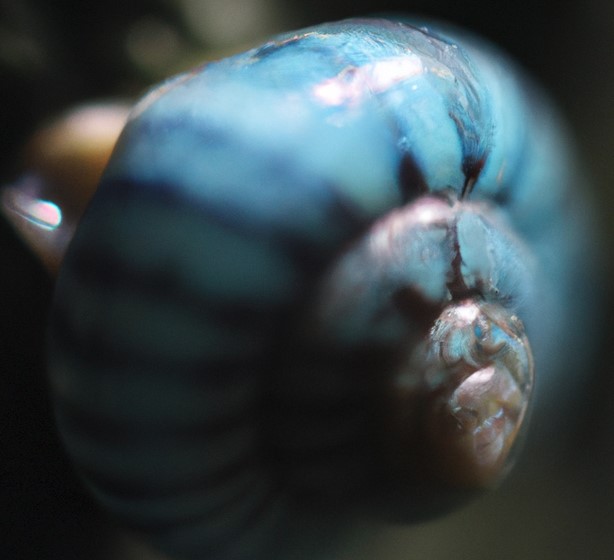
Keeping Blue Mystery Snails Happy
These little guys require a healthy diet consisting of plants or algae, frozen or live shrimp or worms as well as calcium supplements for best health and growth. They should also be housed in tanks with plenty of hiding places with at least 2 inches of substrate located at the bottom where they can burrow and feel safe. Aquarium owners must ensure excellent water quality as they are highly sensitive to poor parameters and sudden changes; it’s advised that

Temperature
Blue mystery snails are tropical pets and will become far more active and breed in an environment that is between 70-80 degrees F. If the temperature is too cold they will become sluggish and inactive, making them less appealing as a pet. Additionally, pH levels should be between 7-8, as soft water can cause issues with their shells. If you don’t have hard water, commercial buffers such as crushed coral or limestone are available to help keep the pH level up.
Water Quality
Blue mystery snails are vulnerable to harm from polluted water that contains excessive nitrogen waste like ammonia or nitrites, which can cause toxic accumulation in their body and result in sickness or death if not addressed promptly. Proper aquarium care for these creatures must include regular water changes and monitoring of the nitrate levels to ensure that any problems are prevented before they arise.
Food
For blue mystery snails, an invertebrate species, calcium is necessary for the development of strong shells and is therefore an essential part of their diet. Without enough calcium, their shells will become week and easily broken. Shell problems in these creatures are often the result of a lack of calcium in their diet.
Adding calcium supplements to the diet or making sure they get enough in the food they’re eating is important to keep them healthy and provide them with a strong shell. Foods like Romaine lettuce (raw), spinach, kale, cuttlebone, and collard greens can all contain significant amounts of calcium which can help support the snail’s shell health.
In addition, providing freshwater with additional minerals by soaking or boiling foods such as shrimps or crustaceans can also increase the mineral content in their environment which is absorbed through their gills, adding more available sources of dietary nutrients for the snails.
Blue Mystery Snails Temperament
Blue mystery snails exhibit peaceful behavior and lack any form of attack. Their operculum and shell serve as a form of protection from potential aggressors in their freshwater habitat. They display activity during daylight hours when the aquarium lights are on, and explore the tank in search of food and relaxation in calm locations. At night they take advantage of their capability to feed in complete darkness, sometimes extending its siphon up to catch some air before retiring again.
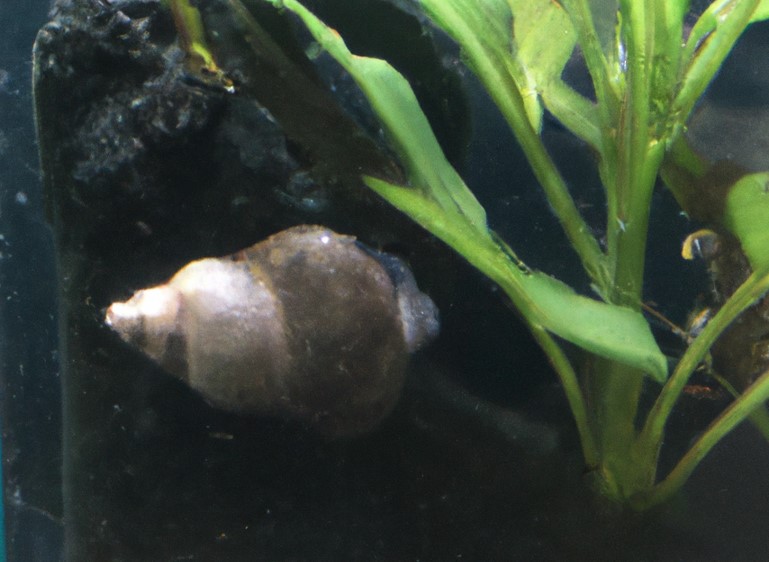
Blue mystery Snails have the ability to be both active and dormant for extended periods of time. Although it may seem unusual, this behavior is normal and should not cause concern for owners, even when there is light present. It is common for the snails to take time getting accustomed to their new surroundings. Ultimately Blue mystery snails make wonderful occupants for those who like sediment-digging animals that do not require much maintenance nor cause harm to other tank inhabitants.
How to Care for Blue Mystery Snails
For a healthy blue mystery snail, proper tank setup and conditions are essential. The minimum tank size for housing 1-2 of these pets is 5 gallons. If you plan to have your snail live with other inhabitants in the same tank, be sure to factor their needs as well. A good rule of thumb is 5 gallons per fish or snail in the aquarium so that it doesn’t become overcrowded. Poor water quality resulting from overstocking can lead to sickness and may cause the death of your snails, so make sure not to put too many of them into the same space.
An appropriate aquarium filter should also be included in the setup to maintain adequate water circulation and keep pollutants low. The filter should cycle between 8 and 10 times an hour according to experts at LiveAquaria as this mimics natural aquatic environments better than slower filtration systems. Additionally, be sure to provide your snail with plenty of hiding places such as rocks and plants, while still allowing ample room for swimming around its habitat.
A blue mystery snail’s diet generally consists of algae, which can easily be found in most pet stores nowadays. Regular feeding is important for maintaining a happy, healthy water environment and ensuring that all tank inhabitants receive enough
Breeding Blue Mystery Snails
Breeding blue mystery snails can be relatively easy as long as you are able to identify the genders of your snail friends. The good news is that, with a little patience, anyone can tell the difference between the males and females.
One of the most obvious ones is that males will have a visible sheath sticking out from their shells; this is much easier to spot when the snails are a bit bigger. Once you have identified your male and female snails, all you need to do is make sure they have sufficient food and clean water so they can live happily together and breed on their own without any special interventions.
Female blue mystery snails usually lay multiple clutches of eggs throughout the tank, each clutch containing between 20-40 eggs. It’s not unusual for them to lay several hundred eggs by the end of one spawning season!
You’ll easily recognise the egg pouch near or above the surface of the water; it looks like small white spots attached to weed or rocks in their habitat. Once they’re fertilized, you can expect to see larva with active swimming movements emerge within two weeks – these larvae will soon hatch into adult blue mystery snails!
Aquarium Compatibility
These snails are not suitable for every environment. For starters, their slow-moving nature makes them easy targets for more aggressive fish or tank mates who might bully and harass them. Therefore, it is important to check the compatibility of all species before adding them into the same tank.
Additionally, rimless tanks are completely unsuitable as the snails will be able to climb up the wall and escape without any lid to contain them. If these precautions are taken care of, blue mystery snails can make an excellent addition to many aquarium setups.
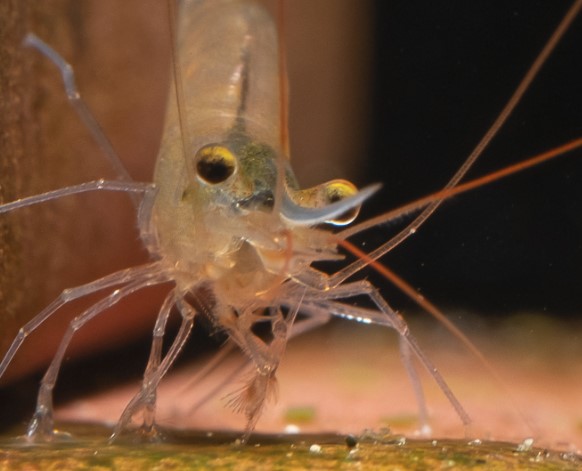
If keeping both sexes together in the same tank they will likely reproduce within a few months of being introduced. Thankfully, many color varieties of the famous apple snail exist which will aid in avoiding the spread of offspring throughout your aquarium.
In addition to being a compatible choice for communities, blue mystery snails are also safe to keep with other species of snails and non-aggressive invertebrates like shrimp. As capable scavengers and algae eaters, Blue blue mystery snails can help keep your tank environment tidy. These snails have no desire for interactions with fish but should only be kept with peaceful species for their safety – steer clear of pairing them up with aggressive fish like oscars or cichlids that could harm them intentionally or unintentionally. Either way, these friendly critters are sure to bring a unique personality to any tank they’re put in!
Conclusions
Blue Mystery Snails are a suitable choice for aquariums with peaceful species. They can add a unique character to the tank and do not seek interaction with fish. It’s important to only keep them with other peaceful species for their safety. Identifying the genders correctly is crucial for successful breeding. Finally, an appropriate filter should also be included in the tank to keep the water clean, as these snails are sensitive to ammonia and nitrites.
Learning about snails and fish aquariums, check out our in depth guides.

